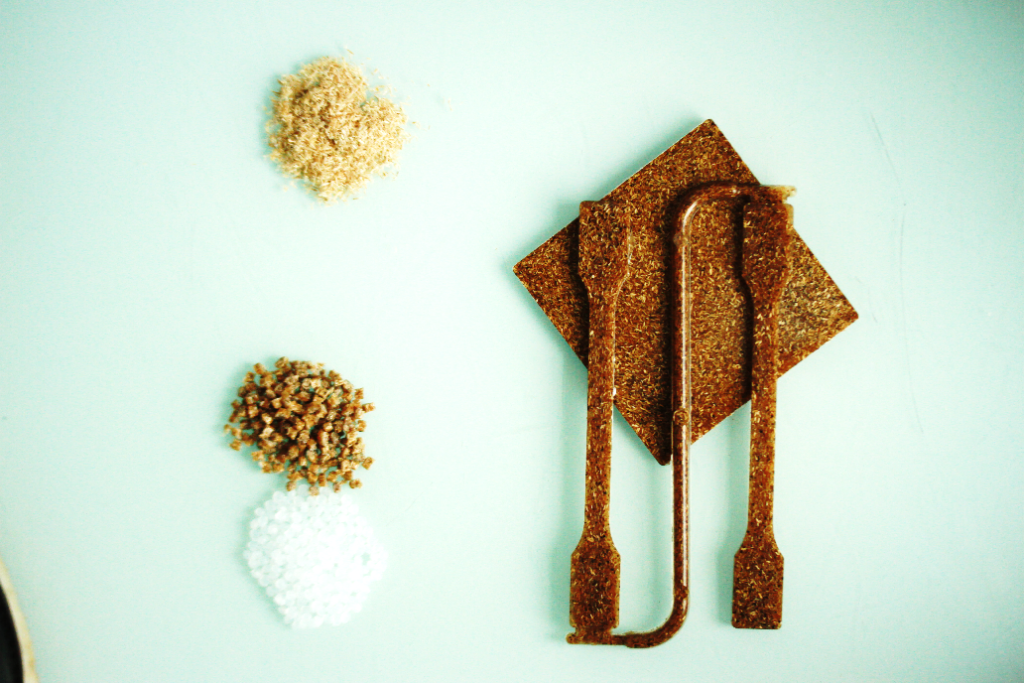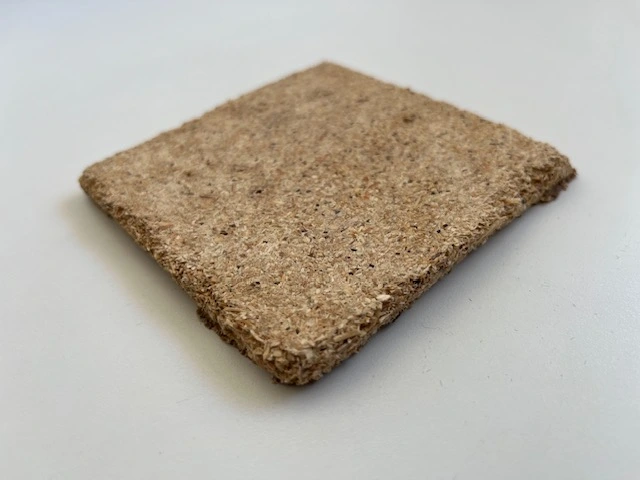Bio-based composite materials: lightweight and hard as wood
Of the various forms of wood, fibers are often the focus of C2MA’s research, as a great deal of work is dedicated to the development and characterization of wood fibers for use in composite materials. IMT Mines Alès has longstanding expertise in the study of reinforcing fibers. Research was initially focused on synthetic materials, and has gradually turned towards more environmentally friendly solutions. “That’s how we moved from glass fibers to plant fibers and, over the years, to wood fibers,” explains Stéphane Corn.
While the majority of the wood samples at macroscopic scale come from the xylotheque at Cirad, so-called ‘divided’ samples come from the FRD-Lab technology hall: the first European platform devoted to the extraction and characterization of plant-based fibers, aggregates and semi-finished products, and a partner of IMT Mines Alès for over 10 years on research projects. Obtaining wood fibers is a complex process, requiring either grinding and sieving to obtain fibrous residues of controlled dimensions, or a specific grinding process – or steam explosion – which uses mechanical pressure to produce high-density monofibers.
These fibers are then characterized and selected to be used as fillers or reinforcement materials in composite products. Within the PCH team, research professors Clément Lacoste and Nicolas Le Moigne are looking into the properties of these wood fibers, how they can be integrated into composite materials, and the final properties of these materials. In combining dimensional, physicochemical and mechanical analyses, the aim of their work is to develop plant-based fibers that can be used as alternatives to synthetic fibers, to make projects more eco-friendly while still delivering high-performance. The AGROBRANCHE project, financed by ADEME, is an example of this.
VOC emissions: a far cry from woody scents
Wood is not the only factor to assess in analyzing the durability of these composite materials such as chipboard, and scientists are also studying the other materials and binders used. “One of the issues with wood-based panels in engineering, for instance, is the use of glues that contain formaldehyde”, points out Clément Lacoste. Over time and as the synthetic glues and resins wear, these wooden panels can begin to emit Volatile Organic Compounds (VOC), which are detrimental to the quality of indoor air, and even carcinogenic, such as formaldehyde.
In an attempt to reduce these health risks, the researcher is working on developing bio-adhesives using polymer resins of natural origin. He is also working with the research team on interactions of wood with its environment (RIME). “We are assessing the indoor air quality in buildings to identify sources of pollutants and find solutions to reduce emissions”, explains Valérie Desauziers, professor and head of the RIME team. “This includes studying solid wood as well as composite materials and chipboard, and so covering construction materials, decoration and furnishings. Our research is therefore cross-disciplinary and complementary to the work done by the PCH and DMS teams”, she adds.
For these studies, the researcher bases her work on conventional air analysis and emission testing methods, but has also developed in-situ measurement methods with her team, to identify pollutant source materials in a building. “There are two approaches: targeted analyses, to detect known and/or regulated pollutants, such as formaldehyde, and non-targeted analyses for emerging compounds,” she specifies. “We know that, faced with increasingly stringent regulations, construction firms are looking into new materials. We are therefore developing new methodologies to identify and quantify new additives, as well as unintentionally added substances, whose impact on health is still little or poorly understood.”
A material that is going green
This study of emissions linked to aging wood materials is a part of the Life-Cycle Assessment (LCA) for these materials. The RIME team therefore studies each stage of the life cycle of the wood materials from the manufacturing phase to assess their environmental footprint. As Nicolas Le Moigne explains: “The use of wood in material applications calls for reflection on the management and optimal use of resources – are they from natural forests or managed by human activity? Which tree species? – and for the parts that have been reused or can be reused – are residues used? timber? What are their specific features and advantages in relation to the intended application?”








